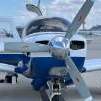Preflight Steps for Mooneys
-
Members Online
- bcg
- Speed Brakes
- UMRPIlot8
- N201MKTurbo
- RangerM20
- Sheriff23
- 1980Mooney
- PilotX
- Marc B
- A64Pilot
- DanM20C
- Bpvlbv
- Keith20EH
- finnicky7
- Mooney in Oz
- LANCECASPER
- TCC
- jamesyql
- Guilly
- jsimmons619
- eman1200
- GeeBee
- jcovington
- 00-Negative
- Rogerg
- PierreL
- midlifeflyer
- bluehighwayflyer
- naascoaerospace
- Jake@BevanAviation
- Stealth Mooney
- Joe Linnebur
- mikey757


Recommended Posts
Join the conversation
You can post now and register later. If you have an account, sign in now to post with your account.